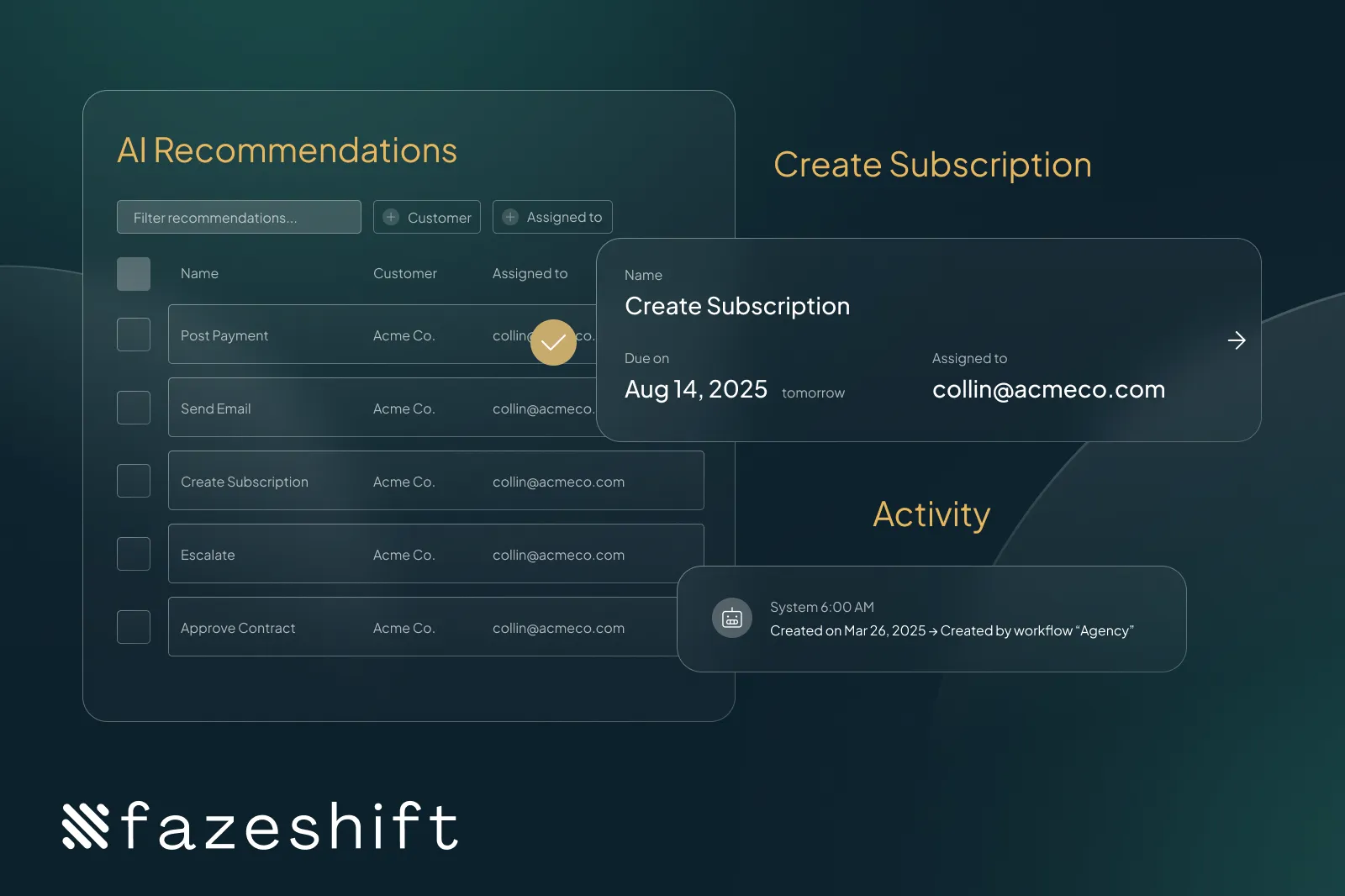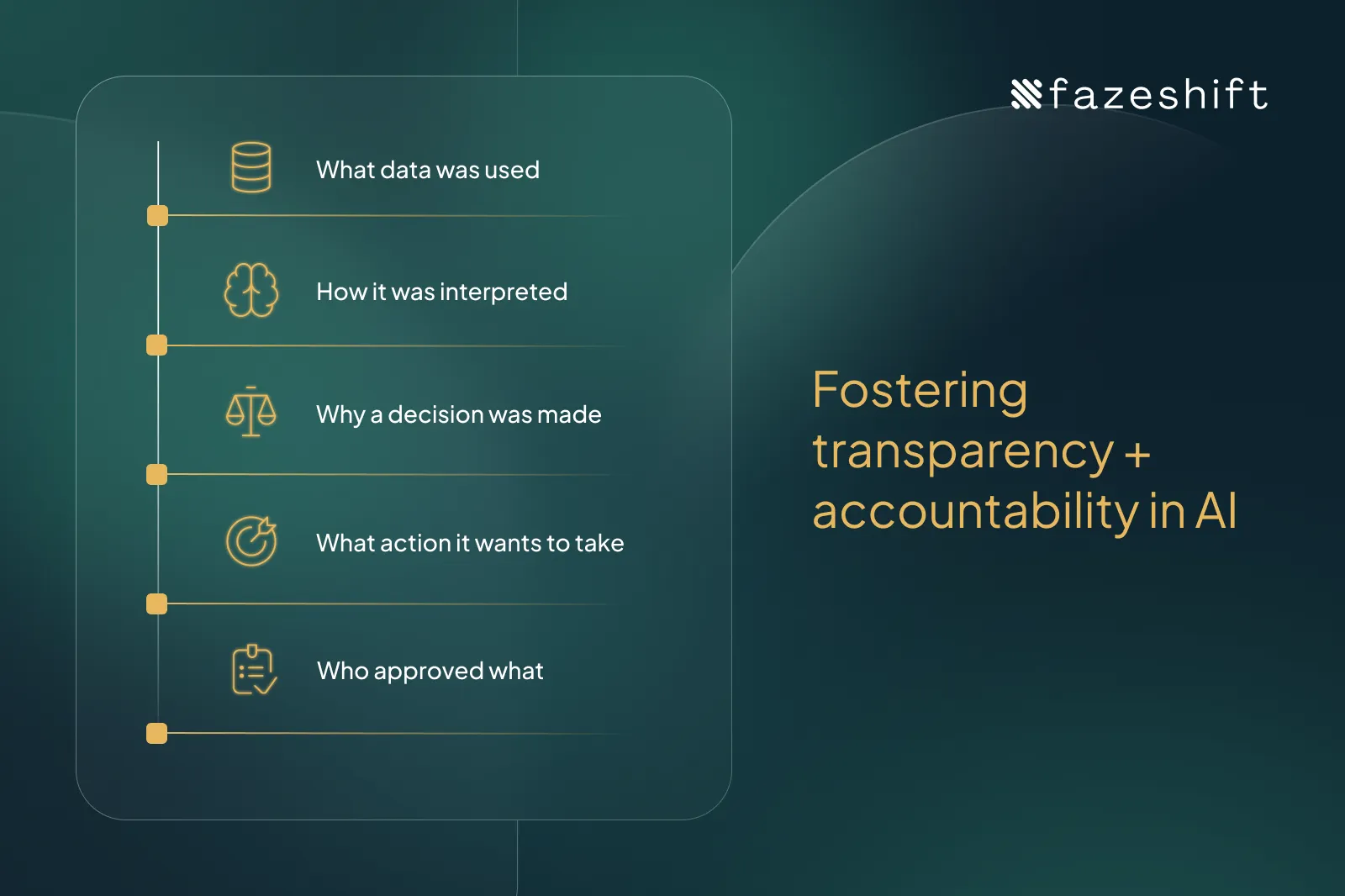Why Automation Controls Matter in Accounts Receivable





While AI and automation can dramatically streamline accounts receivable operations, they aren't a complete replacement for human oversight.
At Fazeshift, we provide finance and accounting teams with the powerful tools they need to automate tasks and processes. Still, we recognize certain decisions require deep knowledge and keen judgment that can only come from people on your team, not an AI agent.
Whether it's managing exceptions, handling payment negotiations, or protecting customer relationships, manual intervention remains a critical part of a well-balanced accounts receivable strategy.

A lot of thought goes into how AI agents work and the edge cases they can solve, but there may be times when your team will want to do a final round of manual checks before certain actions are taken.
Fazeshift’s goal is to automate as much of your AR processes as possible, and while our AI agents are designed to do that, there are times when a person’s judgment is still needed to review exceptions, address unusual situations, and make difficult decisions.
Not every transaction or customer is the same, especially when you’re dealing with disputed charges, unusual payment terms, and unique contract conditions for a specific customer.
For example, Fazeshift’s AI agents are designed to handle contract reviews and payment disputes, but there may be times when it’s more appropriate for someone on your team to make a judgment call, handle negotiations, or review proposed actions, based on their background knowledge of a customer account.
Here are just a few examples that we’ve seen for accounts receivable teams:
There are also times when manager- or executive-level approval will be needed for billing adjustments, large write-offs, and other situations that may have significant financial implications.
Your organization may also have policies and guidelines for very large or sensitive transactions, which may require manual approvals and multi-level reviews for specific types of customers or invoice amounts.

There’s no doubt that AI is a great tool for automating accounts receivable processes up to a certain point.
AI agents may be intelligent and capable of learning from actions made by your team, but it simply can’t replace the relationships that your team has built with customers over time and all the contextual knowledge that goes along with it.
To ensure that specific people on your team can manually review, verify, and authorize — or otherwise override — automated actions, these types of controls should be built into any software solution that you use.
At Fazeshift, we built transparency and accountability into our platform by enabling finance and accounting teams to see what data was used by an AI agent, how it was interpreted, how it came to a conclusion, and what actions it’s suggesting.
Fazeshift even has an auditable trail of all the actions an AI took and who may have had to step in and approve them along the way.
AI and the automation it offers are powerful tools for optimizing accounts receivable processes, but they work best in lockstep with your team’s insights and experience.
Fazeshift’s AI agents are designed to automate tasks that are often complex and nuanced, but we also recognize the importance of giving your team the ability to step in when it matters most or when the stakes are high.
Try Fazeshift and see how combining automation with clear approval workflows and transparency enables accounts receivable teams to move faster without sacrificing control or customer trust.
Eliminate manual bottlenecks, resolve aging invoices faster, and empower your team with AI-driven automation that’s designed for enterprise-scale accounts receivable challenges.

